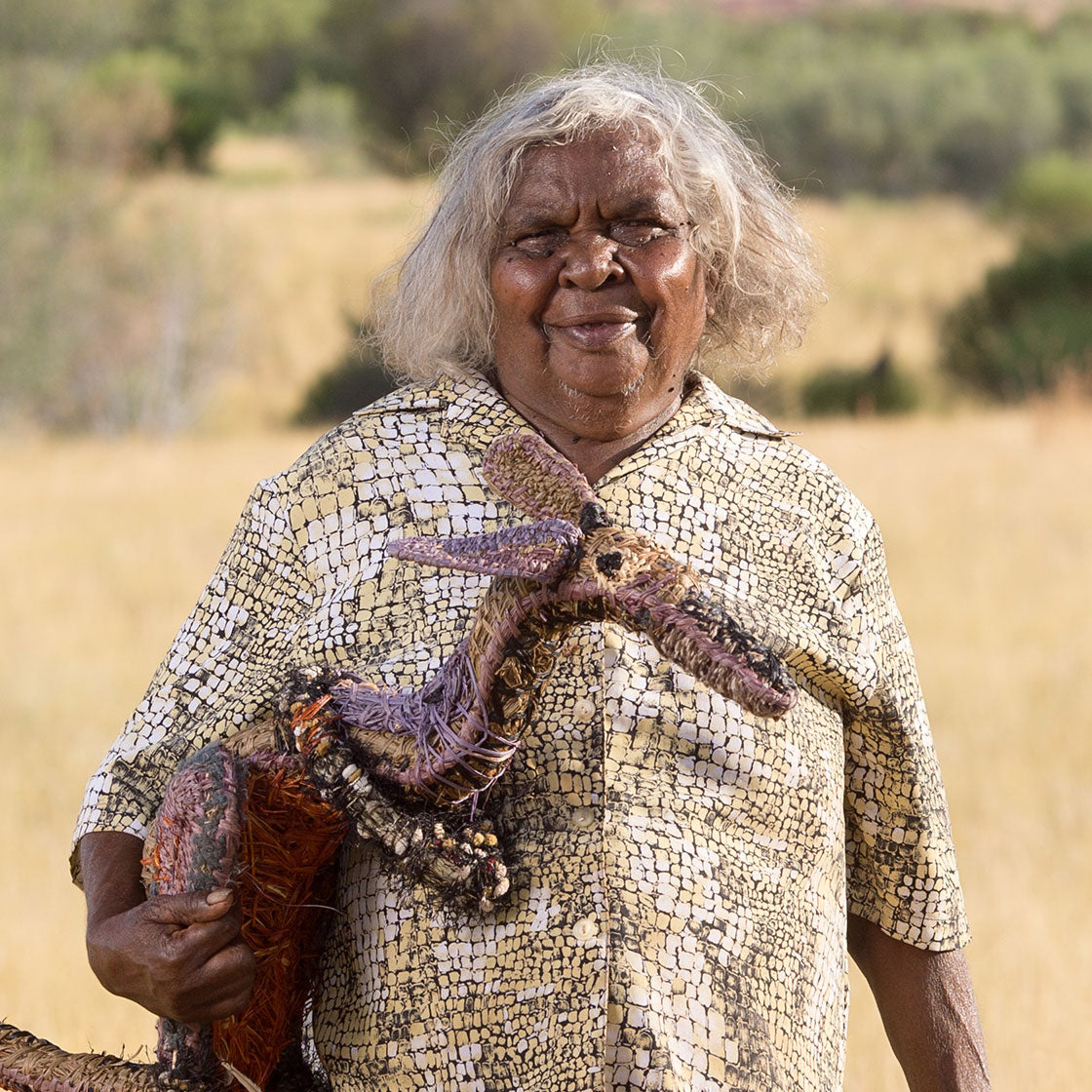Tjunkaya grew up at the Ernabella Mission, where she went to school and later worked and taught her peers various domestic skills including sewing and cooking. Tjunkaya worked in the mission’s craft room as a young woman, becoming an outstanding batik artist with her work being sought by public collections, and featured on the cover of Judith Ryan’s Across the Desert: Aboriginal Batik from Central Australia.
From this beginning Tjunkaya developed extraordinary skill as an artist, creating works in painting, ceramics, Tjanpi, punu, printmaking, spinning and mukata. Her work in these mediums has been seen in numerous exhibitions in Australia and internationally since 1971, in both public and private galleries.
A board member of Ernabella Arts, a powerful speaker and member of the NPY Women’s Council, she is a leader of the Nintintjaku Project, and inter-generational teaching project working with Ernabella Anangu School and NPY Women’s council Youth team.
Tjunkaya has three children and many grandchildren.
“So here we are in the camp making the birds, and really, as we work and as the works progress, and as they get bigger and more beautiful, we really think about the meaning of birds, and thinking about that painting, and thinking about caring and looking after each other, and watching out for each other, and what the land provides, and thinking about the strength of our culture. So it is a lovely time to be there together, working.”








